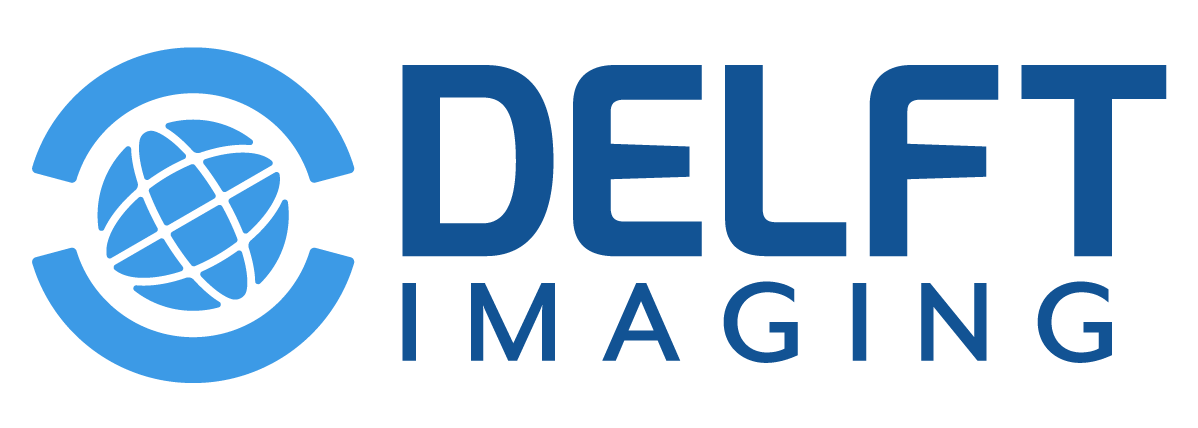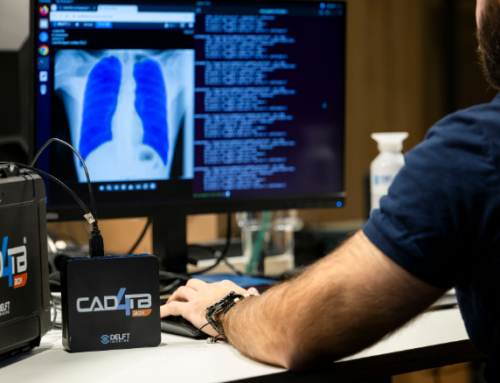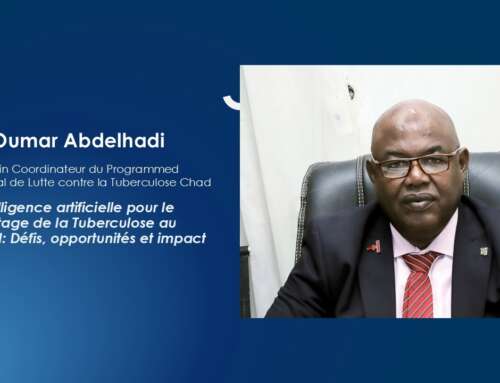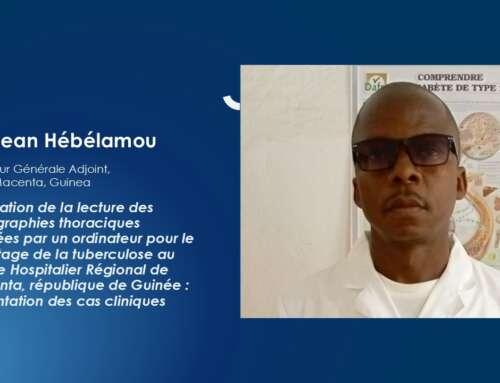At the Delft Imaging webinar “AI for TB Screening in Francophone Africa: Challenges, Opportunities and Impact,” Dr. Soumana Alphazazi, Pulmonologist and Phthisiologist, and National Coordinator of the National Tuberculosis Control Program in Niger, presented insights from the ReCAM project. This initiative uses ultra-portable X-ray equipment with computer-aided detection (CAD) to increase tuberculosis (TB) detection in high-risk populations, focusing on Niamey.
Why active screening matters in Niger
“Niger is a big country of more than 1,000 square kilometers with a population of 26 million with a TB incidence of 74 for 100,000 inhabitants,” said Dr. Alphazazi. “We see a decrease in that incidence and the treatment success rate at 88 percent.” Between 2021 and 2023, national treatment coverage increased from 66 percent to 80 percent.
Despite progress, a 2020 program review showed that 41 percent of Niger’s missing TB cases were located in Zinder, Maradi, Tillabéry, and Dosso. The ReCAM project was designed to reduce this gap by strengthening active case finding, particularly among populations at higher risk of TB.
Strategy and deployment
Launched in 2022 and supported by Delft Imaging, ReCAM was implemented through cascade training, structured preparation, and mobile screening using ultra-portable X-ray systems integrated with CAD4TB.
“We had a screening campaign in the prisons… also in centers that were screening HIV… in the poor quarters in Niamey… in the mining communities, and the different traditional communities, the different refugees, but also in the migrants,” Dr. Alphazazi explained.
Results from the field
Between 2023 and the first quarter of 2025, ReCAM reported:
- 6,917 TB cases identified through triage-based screening
- 327 additional TB cases detected through contact tracing
- 18 cases, including 1 case of multidrug-resistant TB, identified using X-ray and CAD4TB
The program diagnosed 7,262 new TB cases in five target regions. These cases represented 14.5 percent of total national notifications in 2023, 25.1 percent in 2024, and 22.8 percent in early 2025.
National-level impact
“The number of missing TB cases has gone down from 8,000 in 2020 to 3,140 in 2024,” said Dr. Alphazazi. “There was an augmentation in case notification in Maradi and Zinder. But in Doso and Tilaberi, we saw a decrease because of the insecurity”.
He noted that ReCAM enabled systematic screening by triage agents and timely identification of infectious individuals. “This strategy allowed us to implement the active screening of X-rays and the CAD4TB for at-risk and vulnerable populations. And it also reduced the chain of transmission because it allowed us to diagnose some contagious tuberculosis cases”.
Looking ahead
Dr. Alphazazi acknowledged both achievements and constraints. He emphasized the importance of resource mobilization, innovation, and integration of digital diagnostics into national efforts.
“Tuberculosis remains a serious public health problem. Much progress has been made, but the road ahead is still long. With decreasing funding, integrating innovative tools like ultra-portable X-ray and CAD into our national program is beneficial and necessary. These technologies have allowed us to detect cases earlier, reduce transmission, and reach vulnerable populations where traditional methods fall short. If we want to end tuberculosis by 2030, innovation and resource mobilization are our strongest path forward”.



